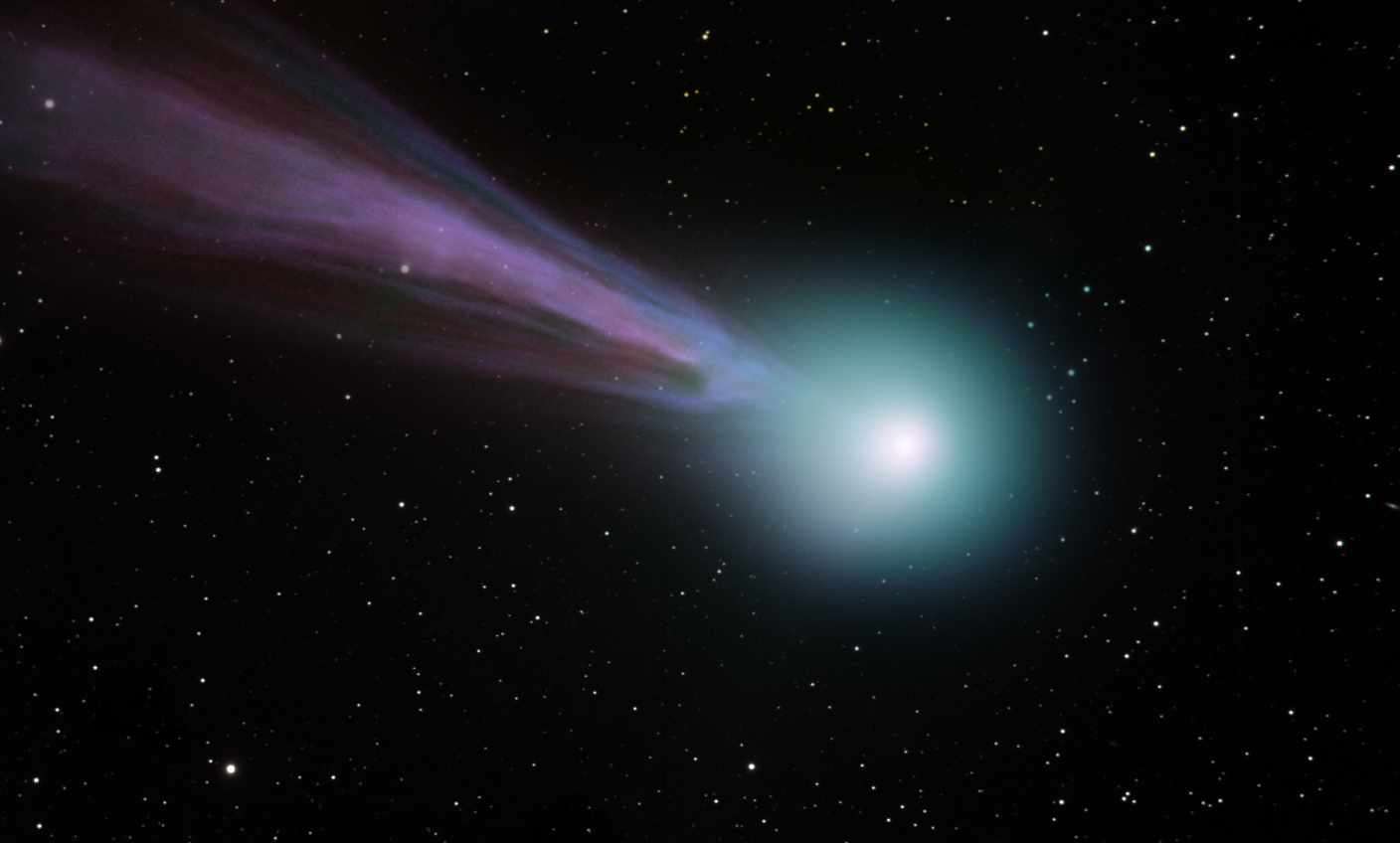Comet Lovejoy lived up to its name by releasing large amounts of alcohol as well as a type of sugar into space, according to new observations. The finding marks the first time ethyl alcohol, the same type in alcoholic beverages, has been detected in a comet, scientists said. It also adds to the evidence that comets could have been a source of the complex organic molecules necessary for the emergence of life.
Comet Lovejoy lived up to its name by releasing large amounts of alcohol as well as a type of sugar into space, according to new observations.
The finding marks the first time ethyl alcohol, the same type in alcoholic beverages, has been detected in a comet, scientists said. It also adds to the evidence that comets could have been a source of the complex organic molecules necessary for the emergence of life.
“We found that comet Lovejoy was releasing as much alcohol as in at least 500 bottles of wine every second during its peak activity,” said Nicolas Biver of the Paris Observatory, France, lead author of a paper on the finding published Oct. 23 in the journal Science Advances.
His team found 21 different organic molecules in gas from the comet, including ethyl alcohol and glycolaldehyde, a simple sugar.
Comets are frozen remnants from the formation of our solar system. Scientists are interested in them because they’re fairly pristine and thus hold clues to how the solar system was made. Occasionally a comet come close to the Sun. There it heats up and releases gases, letting scientists determine its makeup.
Comet Lovejoy, formally catalogued as C/2014 Q2, was one of the brightest and most active comets since comet Hale-Bopp in 1997. Lovejoy passed closest to the sun on Jan. 30, when it was also releasing 20 tons of water per second. The team observed the atmosphere of the comet around this time when it was brightest and most active. They saw a glow of microwave radiation from the comet using the 30-meter (almost 100-foot) wide radio telescope at Pico Veleta in the Sierra Nevada Mountains of Spain.
Sunlight energizes molecules in the comet’s atmosphere, causing them to glow at specific frequencies, or “colors,” of microwave light. Characteristic frequencies for each kind of molecule reveal its identity.
Some researchers think comet impacts on ancient Earth delivered a supply of organic molecules that could have helped create life. Discovery of complex organic molecules in Lovejoy and others supports this idea, the investigators said.
It “definitely promotes the idea the comets carry very complex chemistry,” said Stefanie Milam of NASA’s Goddard Space Flight Center in Greenbelt, Md., a co-author of the paper.
About 3.8 billion years ago, she said, “when many comets and asteroids were blasting into Earth and we were getting our first oceans,” a period called the Late Heavy Bombardment, “life didn’t have to start with just simple molecules like water, carbon monoxide, and nitrogen.”
“Instead, life had something that was much more sophisticated on a molecular level. We’re finding molecules with multiple carbon atoms. So now you can see where sugars start forming, as well as more complex organics such as amino acids—the building blocks of proteins—or nucleobases, the building blocks of DNA. These can start forming much easier than beginning with molecules with only two or three atoms.”
In July, the European Space Agency reported that the Philae lander from its Rosetta spacecraft in orbit around comet 67P/Churyumov-Gerasimenko detected 16 organic compounds as it fell to the comet and bounced around.
According to the agency, some of the compounds detected play key roles in the creation of amino acids, nucleobases, and sugars—ingredients of life—from simpler building blocks.
Astronomers think comets preserve material from the ancient cloud of gas and dust that formed the solar system. Exploding stars, called supernovae, and the winds from red giant stars near the end of their lives produce vast clouds of gas and dust. These eventually become new stars, and planets.
The clouds contain countless dust grains. Carbon dioxide, water, and other gases form a layer of frost on the surface of these grains, just as frost forms on car windows during cold, humid nights, Milam explained. Radiation in space powers chemical reactions in this frost layer to produce complex organic molecules. The icy grains become part of comets and asteroids, some of which hit young planets like ancient Earth—delivering the organic molecules there.
“The next step is to see if the organic material being found in comets came from the primordial cloud that formed the solar system or if it was created later on, inside the protoplanetary disk that surrounded the young sun,” said Dominique Bockelée-Morvan from Paris Observatory, a co-author of the paper.










